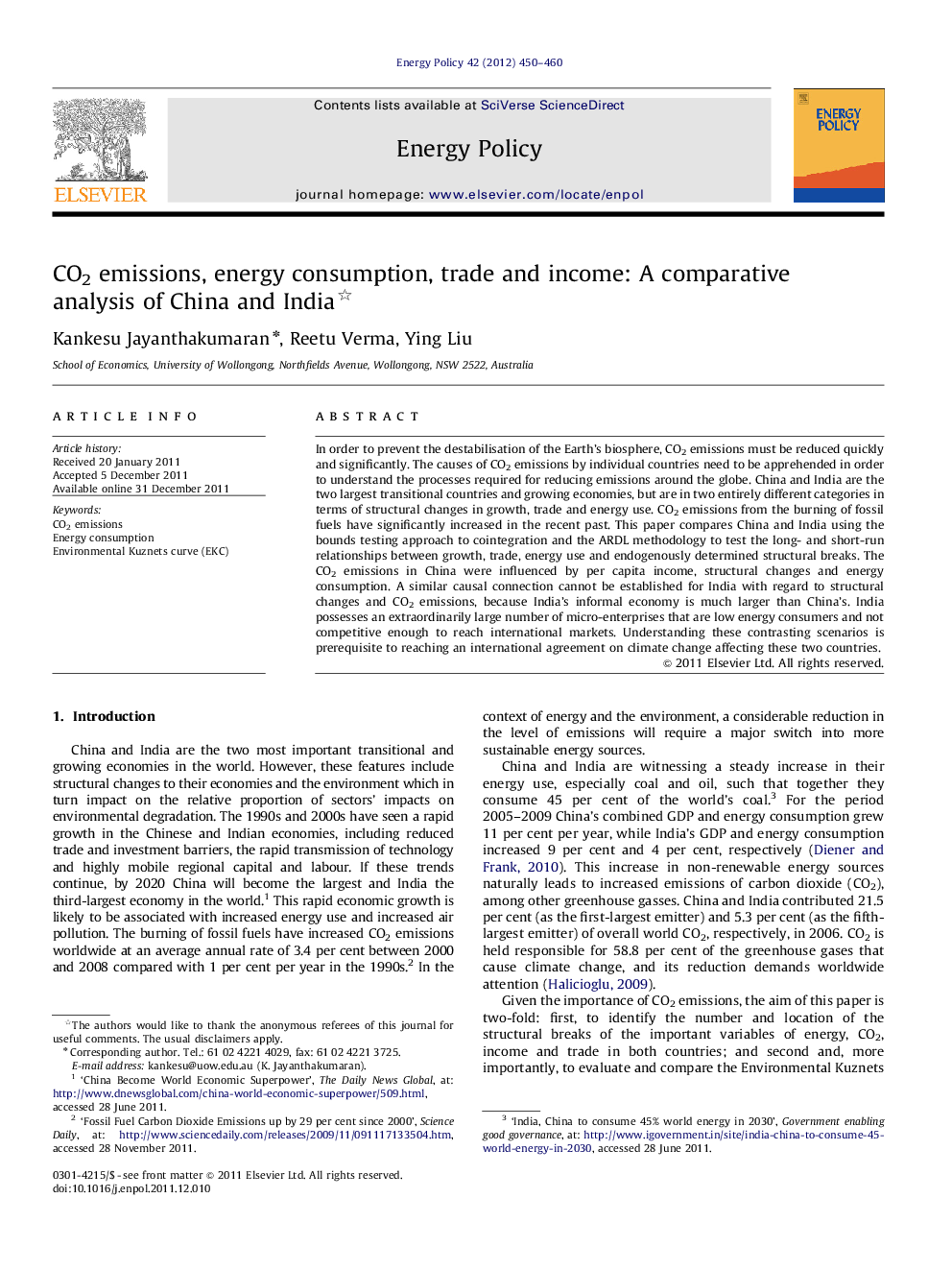| کد مقاله | کد نشریه | سال انتشار | مقاله انگلیسی | نسخه تمام متن |
|---|---|---|---|---|
| 995783 | 1481316 | 2012 | 11 صفحه PDF | دانلود رایگان |

In order to prevent the destabilisation of the Earth's biosphere, CO2 emissions must be reduced quickly and significantly. The causes of CO2 emissions by individual countries need to be apprehended in order to understand the processes required for reducing emissions around the globe. China and India are the two largest transitional countries and growing economies, but are in two entirely different categories in terms of structural changes in growth, trade and energy use. CO2 emissions from the burning of fossil fuels have significantly increased in the recent past. This paper compares China and India using the bounds testing approach to cointegration and the ARDL methodology to test the long- and short-run relationships between growth, trade, energy use and endogenously determined structural breaks. The CO2 emissions in China were influenced by per capita income, structural changes and energy consumption. A similar causal connection cannot be established for India with regard to structural changes and CO2 emissions, because India's informal economy is much larger than China's. India possesses an extraordinarily large number of micro-enterprises that are low energy consumers and not competitive enough to reach international markets. Understanding these contrasting scenarios is prerequisite to reaching an international agreement on climate change affecting these two countries.
► The bounds testing approach to cointegration and the ARDL methodology were used to test CO2 emissions–energy consumption–income–international trade nexus in China and India.
► The CO2 emissions in China were influenced by structural changes and associated energy consumption, income and foreign trade.
► A similar causal connection (structural change) cannot be established in India.
► Understanding these contrasting scenarios is prerequisite to reaching an international agreement on climate change affecting these countries.
Journal: Energy Policy - Volume 42, March 2012, Pages 450–460